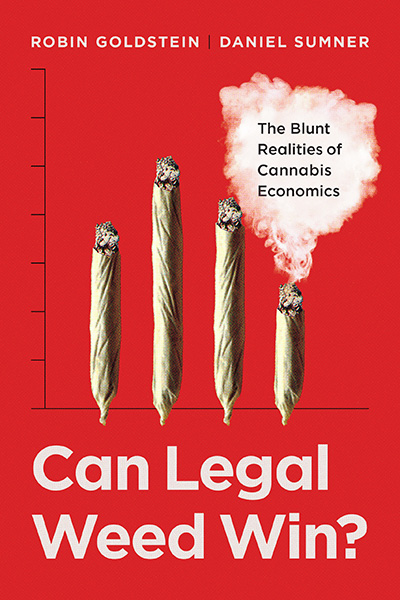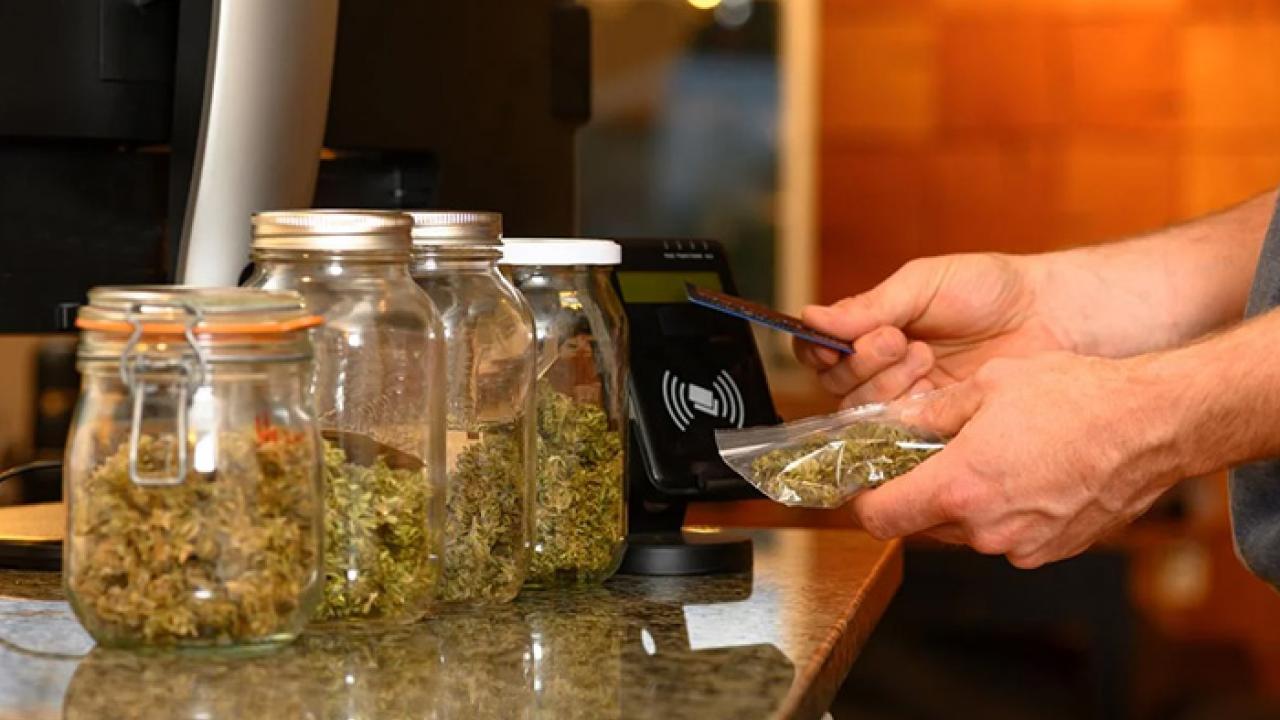As legal recreational cannabis use becomes more commonplace in the U.S. — 24 states currently allow it — public opinion has shifted dramatically in a favorable direction.
When polled, 88% of Americans say cannabis should be legal for recreational or medical use, and about half of Americans say they believe legalizing recreational cannabis is good for local economies, according to the Pew Research Center.
But the road to legal cannabis has not been smooth.
Distinguished Professor Daniel Sumner and research faculty member Robin Goldstein, both in the Department of Agricultural and Resource Economics at UC Davis, have been studying the market for years and wrote about legalization in the U.S. and Canada in the book Can Legal Weed Win? The Blunt Realities of Cannabis Economics (University of California Press, 2022). They have found that the economic results of the legal sale and use of cannabis is not the slam dunk that some predicted.

“When people first got into this business, there was wasn't much past data to go on, and they didn't know how big the market would be — that means having to use wild assumptions,” Goldstein said. “A lot of people predicted that 10 years after recreational legalization started, cannabis was still going to be selling for $1,000 or $2,000 a pound wholesale. But when you have a new market and lots of people come in and it's competitive and new technology gets implemented and companies get more efficient, prices fall very fast. We say, expect them to keep falling. This is going to keep happening in every state.”
While both economists agreed that legalization overall has been fraught with issues, they said it is further complicated by the many factors at play including heavy regulations and taxes that drive up prices for consumers and that helps the continued competition from the illegal market.
It’s a regulation-heavy business, driving up prices
With the legalization of cannabis, every governing entity established a set of rules and regulations, with taxes and fees for would-be businesses to start growing, processing, wholesaling or retailing cannabis. As a result, the hurdles are numerous causing a high barrier to entry and high costs of operation compared to illegal competitors.
“Step one for entering the cannabis business is to hire a lawyer to read 2,000 pages of regulations about cannabis. That’s step one,” Sumner said, noting the multiple agencies involved.
As opposed to other businesses, Sumner said, cannabis is not as simple as setting up a farm, complying with general regulations and finding a buyer for your product.
“We used to have a catch phrase: Let cannabis be kale,” Sumner said. “That sounds simplistic, but, you know, kale has to follow rules, too. You can’t use a bunch of poison pesticides and you can’t hire workers [for nothing] — there are real rules. But with legal cannabis, it’s that, squared.”

As a result, the cost of legal cannabis for the end consumer has skyrocketed.
“Everyone gets their piece, and everyone gets their wish list of regulations,” Goldstein said. “And then you end up with a product that’s twice as expensive as what’s been available for many years already in the unlicensed market.”
The illegal market is still competitive
Lower prices are a big reason for continued competition from the unlicensed cannabis market. Coupled with the difficulties new businesses face, the underground market still has an edge.
Legal cannabis has not taken over the market as predicted by some.
“Most counties in California haven’t allowed it,” Sumner said. “One of the principles in California was local control. And what I say to those counties is, ‘Oh, you really want illegal weed instead?’ Because, you know, it’s not like you don’t have weed in those places. You just have illegal weed.”
Added Goldstein, “What people don’t understand is that people are going to consume probably a similar amount whether it’s legal or illegal. And so, they’re just going to shift their spending to one side or the other, depending on which is more appealing.”

Could federal legalization help?
Just last month, the federal government signaled that it could reclassify the drug from a Schedule I to a Schedule III, acknowledging less likelihood of abuse compared to a drug like heroin. The effects will be tax-related benefits for businesses, and perhaps a decrease in federal marijuana-related arrests, although these have already dwindled. More cannabis research could also be funded. But the drug would still be considered an illegal substance.
Hypothetically, full descheduling, or decriminalization, Goldstein said, would have much greater ramifications for the cannabis industry.
“With descheduling, cannabis could likely be sold in a variety of stores, like CBD products are, rather than just being sold in single-purpose cannabis dispensaries as they are now in every legal weed state,” he said. “This would mean that many businesses that invested heavily in opening a licensed dispensary and following all those rules are suddenly competing with ordinary grocery stores.”
How does the future look?
Going back to the original question from the economists’ book — can legal weed win? — Sumner said he remains optimistic.
“I think it goes back to something like, ‘let cannabis be kale,’ whether you like it or not,” he said. “There has to be a certain amount of regulatory unraveling to allow a legal industry to function. You have to give legal weed a fair shot to compete in the market.”
